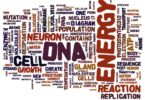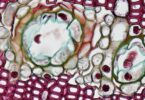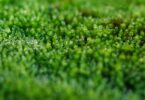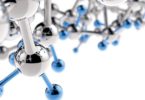The first pesticide used by man was
(a) Rotenone
(b) Pyrethrin
(c) Pheromone
(d) Thuriocide
Biological control of pests is
(a) Polluting
(b) Highly expensive
(c) Self-perpetuating
(d) Toxic
Carbamates employed as insecticide are
(a) Phenylcarbamates
(b) Thiocarbamates
(c) Propoxur
(d) Dithiocarbamates
A major pest eradicated through release of sterile males is
(a) Screw worm
(b) Aphids
(c) Ladybug
(d) Praying Mantis
Related: MCQs on Diode and Triode
Pesticides with very low biodegradation but strong affinity for fatty tissues are
(a) Organachlorines
(b) Organophosphates
(c) Pyrethroids
(d) Triazines
IPM stands for
(a) International Population Management
(b) Integrated Pest Management
(c) International Plant Management
(d) Integrated Plant Management
Insecticide obtained from neem plant is
(a) Pyrethrin
(b) Pyrethroid
(c) Thiocarbamate
(d) Azadirachtin
Urea derivate pesticides belong to the category of
(a) Organochlorines
(b) Organosphates
(c) Carbamates
(d) Triazines
Related: Basic arithmetic operations quantitative aptitude
Ladybug is a predator of
(a) Moths
(b) Beetles
(c) Bacteria
(d) Aphids
Methyl isocyanate gas is used for synthesizing
(a) Temik
(b) Baygon
(c) Flit
(d) Selvin
The phenomenon of using a predator for controlling a pest is
(a) Artificial control
(b) Biological control
(c) Confusion technique
(d) Genetic engineering
Consider the following kinds of organisms:
- Bacteria
- Fungi
- Flowering Plants
Which of the above kinds of organisms is employed as biopesticides?
(a) 1 only
(b) 2 and 3 only
(c) 1 and 3 only
(d) 1, 2 and 3
Related: Questions about Biodiversity
A third generation pesticide is
(a) Pheromone
(b) Weedicide
(c) Juvenile hormone analogue
(d) Sterilogastrone
DDT was first synthesized by
(a) Othnar Zeidler
(b) Paul Muller
(c) Michael Faraday
(d) Schrader
Thurioside is proteinaceous toxin obtained from
(a) Biofertilizer
(b) Green manure
(c) Bacterial origin
(d) Farmyard manure
Which is a microbial insecticide?
(a) Bacillus thuringenesis
(b) B. subtilis
(c) B. polymixa
(d) B. brevis
Biological control of agricultural pests, unlike chemical control, is
(a) Toxic
(b) Polluting
(c) Very expensive
(d) Self-perpetuating
Related: Questions about Global Warming
Rotenone is a
(a) Natural herbicide
(b) Bioherbicide
(c) Natural insecticide
(d) Insect hormone
Which of the following pesticides is non-biodegradable?
(a) Triazines
(b) Organophosphates
(c) Organochlorines
(d) None of these
BT cotton is resistant to
(a) Insect
(b) Herbicides
(c) Salt
(d) Drought
Corpora allata is removed from a nymph. It will
(a) Remain nymph for life
(b) Become adult
(c) Change to next nymph and remain in that state for ever
(d) Die after some time\
A natural insecticide obtained from plants is
(a) Azadirachtin
(b) Rotenone
(c) Nicotine, Pyrethrum and cinerin
(d) All these
Related: Agriculture Questions and Answers
The pesticide used in foundations of buildings for preventing termite attack is
(a) DDT
(b) BHC
(c) Aldrin
(d) Endosulphan
A major drawback of DDT as a pesticide is that
(a) Organisms at once develop resistance to it
(b) It is significantly less effective than other pesticides.
(c) Its cost of production is high
(d) It is not easily and rapidly degraded in nature
Biopesticides include
(a) Bioherbicides
(b) Bioinsecticides
(c) Bioherbicides and bioinsecticides
(d) Bioherbicides, bioinsecticides and biofertilizers
Mosquito–repelling coils contain
(a) Aluminum phosphide
(b) Arsenic
(c) Pyrathrin
(d) Diethyl bromide
Related: Genetic engineering multiple choice questions and answers
Which one is pest?
(a) Mouse
(b) Pathogen
(c) Insect
(d) All of these
Thurioside is
(a) Insecticide
(b) Fungicide
(c) Antibiotics
(d) Weedicide
Which of the following is a fungicide?
(a) Thiram
(b) Dichlone
(c) Capton
(d) All the above
Pesticides are the chemicals that kill
(a) Weeds
(b) Mites
(c) Insects
(d) All of these
Related: List of Minerals and Their Largest Producing Countries
A transgenic crop that is resistant to hornworm larvae is
(a) Sunflower
(b) Tomato
(c) Tobacco
(d) Sugarcane
Pesticides disturb the ecosystem by eliminating the
(a) Micro-organism of crop
(b) Organisms which form the food chain
(c) Organisms which protect the environment
(d) None of these
The first commercial pesticide was
(a) DDT
(b) 2,4-D
(c) Burgundy mixture
(d) Bordeaux mixture
Which one is an effective plant insecticide?
(a) Pyrethrin
(b) Cinerin
(c) Nicotine
(d) All these
Related: Questions about Liver
Insecticides kill
(a) Harmful insects
(b) Only plant pests
(c) Specific insects
(d) Both harmful and useful insects
One of the major difficulties in the biological control of insect pests is that
(a) The predator develops a preference for other diets and may itself become a pest.
(b) The predator does not always survive when transferred to a new environment
(c) The method is less effective as compared with the use of insecticides
(d) The practical difficulty of introducing the predator to specific areas
The earliest pesticide was
(a) Margosa
(b) Pyrethrum
(c) Nicotine
(d) DDT
When a natural predator living being applied to other pathogenic organisms to control them, this process is called:
(a) Biological control
(b) Genetic engineering
(c) Confusion technique
(d) Artificial control
Related: question and answer about plants
The pesticides used in killing aquatic pests (including insects) are
(a) DDT
(b) BHC
(c) Kerosene oil
(d) crude oil
The first bioinsecticide developed on a commercial scale was
(a) Quinine
(b) DDT
(c) Sporeine
(d) Oranophosphates
The Nobel prize was awarded to Paul Muller for the discovery of which of the following pesticides.
(a) Malathion
(b) Parathion
(c) Pyrethrum
(d) DDT
What is the main problem caused by the use of pesticides?
(a) Their residues persist in water and other components of the environment.
(b) They deform the gills of some fishes
(c) They kill silkworms
Related: Questions about Fungi
Third generation pesticides are
(a) Insect repellents
(b) Pheromones
(c) Pathogens
(d) Insect hormone analogues
Houseflies and mosquitoes have become resistant to the
(a) BHC
(b) Aldrin
(c) DDT
(d) Malathion
Pesticides cause
(a) Noise pollution
(b) Air pollution
(c) Acquatic pollution
Pesticide is
(a) Food grain preservative
(b) Fungus killer
(c) Insect killer
(d) Insect killer and Food grain preservative
Related: Petroleum quiz questions and answers
In confusion technique, the pheromone coated paper strips are thrown over an area in order to
(a) Attract insects and kill them
(b) Repel insects from an area
(c) Confuse males that they are unable to locate females
(d) Confuse females so that they are unable to locate males
Which weed has been eradicated by biological control?
(a) Parthenium
(b) Cactus
(c) Eichhornia
(d) Chrysanthemum
What are rodenticides ?
(a) that kill fishes
(b) that kill insects
(c) that kill rats
(d) that kill cockroaches







Any help question join my insta
Krishna.kshirsagar144 it’s insta
Any help
It’s important
Buissness analyst
Mr. Krishnath santosh kshirsagar
SUPER
Interesting, kownledgebl questions.